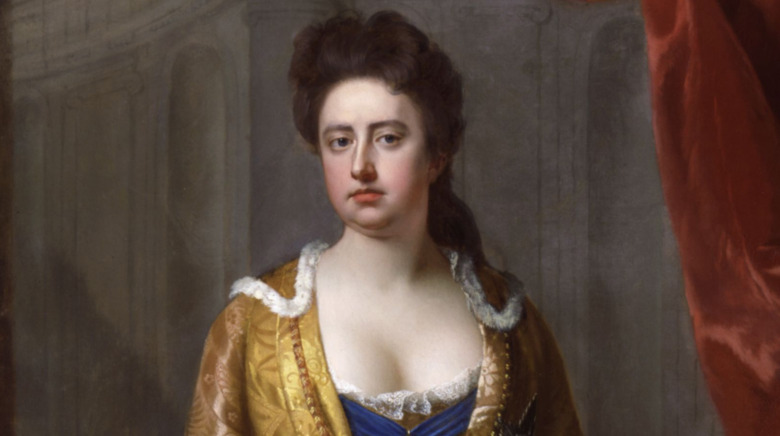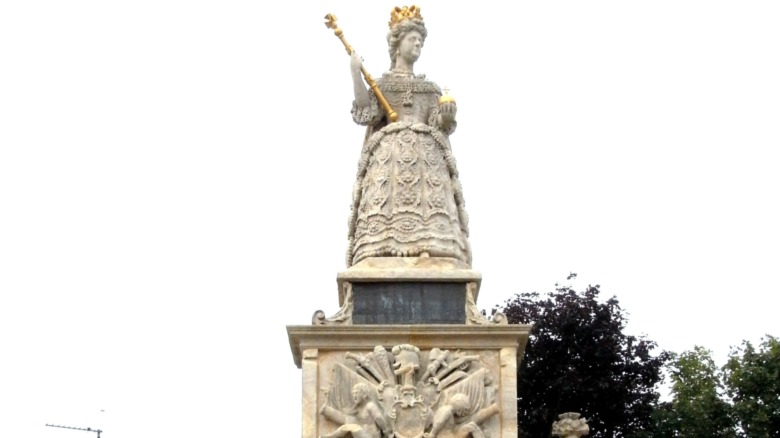The Tragic Death Of Anne, Queen Of Great Britain
By all accounts, Queen Anne (1665-1714) was a tragic historical figure beset by constant poor health and frustrated circumstances. Her gout was so bad that when she became queen at age 37 in 1702, she had to be carried to the ceremony in a chair, per Historic UK. Most of her numerous pregnancies resulted in miscarriages and stillborn infants, and her one living child, William, died at age 11 from smallpox.
Anne has been — likely unfairly — described as vulgar, mean, small-minded, bad at conversation, unwise, overly fond of drinking (she was dubbed "Brandy Nan"), and "the quintessence of ordinariness," per Brit Royals. Historians have even taken to calling out her appearance as "homely." To top it off, her husband George was a "gross, rather ridiculous figure," or "handsome, if uninspiring," as Britannica puts it; George was denounced by Anne's father, King James II, who said, "I have tried him drunk and I've tried him sober, but there is nothing in him." Anne also hated her in-laws. At least, though, she had a good friend in Sarah Churchill... until they eventually had a terrible falling out.
Nonetheless, it was Anne who made history as the first monarch of the fledgling United Kingdom. In 1707, England and Wales (Britain) were joined by the Kingdom of Scotland to become the "Kingdom of Great Britain," as Historic UK tells us. (Ireland didn't join until 1801.) The timeliness of Anne's rule, for a while, offset her ultimate, sad fate.
Anne was beset by gout and miscarriages at the founding of Great Britain
Anne was third in line in 1688 when her father, James II, a Catholic, abdicated the throne, and her sister Mary, a Protestant, took over in what's referred to as the Glorious Revolution of 1688, as History explains. When Mary died from smallpox in 1694, Mary's husband William took over, but as Historic Royal Palaces tells us, William broke his collarbone falling from his horse in 1702, and died of complications that same year.
Even though she presided over the UK for a mere 12 years, and despite all of her health-related difficulties, her reign was "a brilliant one," as Historic UK says. Anne ruled during the early Enlightenment (1685-1815), an era of rational investigation that produced the bedrock of modern humanism and liberal ethics, which happened right when the War of Spanish Succession broke out, as the BBC explains, mere months after Anne took the throne. This is when, as mentioned, Scotland and Britain squared their differences by joining forces to create Great Britain in 1707.
Despite her achievements, Anne's life would end tragically. Towards the end of her life, she was had severe gout and could barely walk. She died from a stroke in her sleep at the age of 49, and had swelled up so much that, as Brit Royals says, her coffin was practically square. Despite all efforts to produce an heir, Anne's horrific obstetric history meant that she was also the last of the House of Stuart.

